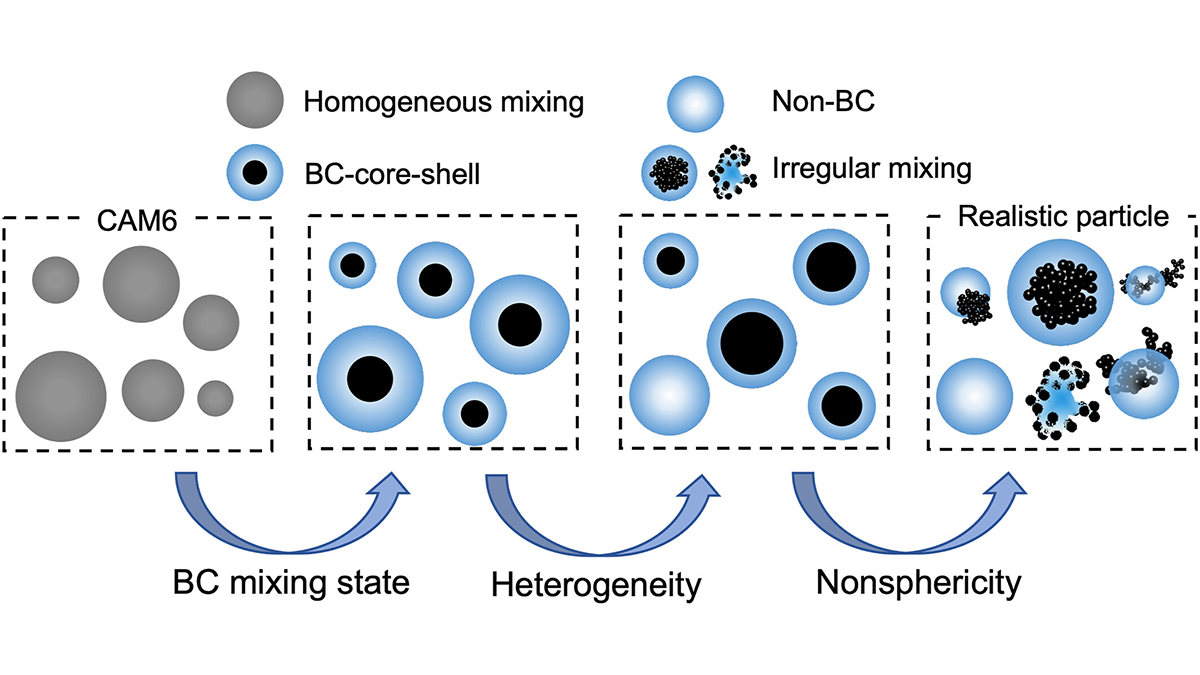Editors’ Highlights are summaries of recent papers by AGU’s journal editors.
Source: Journal of Geophysical Research: Atmospheres
Modeling the optical properties of atmospheric black carbon (BC) aerosols remains highly challenging due to their complex mixing states, non-spherical shapes, and uneven distribution of coatings, which introduces significant uncertainties to understanding aerosol radiative effects and climate impacts. While numerical models do exist that accurately depict BC morphologies and microphysics, they are generally limited to small-scale particle-level studies and have not been integrated into large-scale atmospheric or climate models.
Chen et al. [2024] developed a multidimensional optical parameterization that significantly improves the accuracy of aerosol absorption predictions in large-scale climate models by better accounting for complex BC morphologies and mixing states. This leads to closer alignment with observational data.
The improved parameterization, bridging the gap between particle-level and large-scale models, is an important step towards better predictions of BC’s impacts on climate, ultimately contributing to more reliable climate projections and informing more effective climate policies.
Citation: Chen, G., Liu, C., Wang, J., Yin, Y., & Wang, Y. (2024). Accounting for black carbon mixing state, nonsphericity, and heterogeneity effects in its optical property parameterization in a climate model. Journal of Geophysical Research: Atmospheres, 129, e2024JD041135. https://doi.org/10.1029/2024JD041135
—Nicole Riemer, Editor, JGR: Atmospheres


